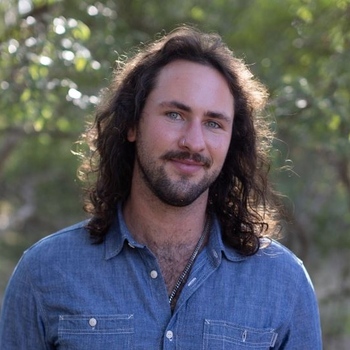Hello and welcome!
Some patterns don’t shift just because we understand them.
You can talk about your anxiety for years and still feel gripped by it. You can name your attachment style and still sabotage closeness. You can trace your habits back to childhood and still feel stuck in them. That’s because the parts of us that hold pain—and drive behavior—aren’t always verbal or logical.
My work is, frankly, different. I use experiential, somatic, and depth-oriented methods to help you access the unconscious processes shaping your emotions, relationships, and sense of self. This approach isn’t just about insight. It’s about transformation.
I specialize in working with individuals and couples who feel frustrated by years of talk therapy with little change, who struggle to connect their intellectual insight with emotional shifts, and who want a more active, engaged, and embodied therapy process.
Whether you're coming in alone or with a partner, we’ll work with the deeper structures driving your behaviors and relational patterns—so that change is not only possible, but sustainable.
The Three Pillars of My Work:
1.) Talk — depth-oriented, insight-based therapy that explores unconscious motivations, meaning, and patterns in both individuals and couple dynamics. Draws from analytic theories with a strong emphasis on early attachment formation.
2.) Experiential — somatic tracking, parts work, and emotion-focused techniques to help you feel and integrate rather than avoid—especially powerful in relational repair work.
3.) Psychoeducation — grounded in neurobiology, evolution, and attachment theory to help individuals and couples understand what is happening in their brains and bodies and build new capacities for connection.
What does this mean, practically?
1. Somatic + Attachment Work:
An individual client keeps freezing in relationships but doesn’t know why. Through body-based tracking and visualization, we uncover a deep fear of being perceived—a nervous system response formed in early caregiving. As the body learns new tolerances for closeness, their relationships shift.
In couples work, this might look like exploring how one partner’s shutdown response is misread by the other as indifference, helping both partners co-regulate and build trust.
2. Depth + Parts Work:
An individual client keeps relapsing after months of sobriety. Instead of just exploring triggers, we map the internal parts at war: one craving connection, one afraid of vulnerability, one punitive and perfectionistic. Naming and observing these parts opens the door to sustainable change by increasing capacity for emotion, stress, and uncertainty.
In couples, we often work with each partner’s protective parts—those that lash out, withdraw, or shut down—and help them speak for, rather than from, their hurt.
3. Pattern Disruption + Transference:
An individual client intellectualizes everything. In session, I gently name this pattern as it’s happening, and we explore what makes direct contact with emotion so unsafe. As we metabolize and regulate that fear together, they start showing up in their life—not just thinking about it.
In couples work, I help track what’s happening beneath content—tone, timing, posture—and translate reactivity into the deeper needs and longings that drive it.
Issues I Commonly Work With:
-Somatic awareness and processing
-Depth-work and Shadow integration
-Emotional regulation and grounding
-Learning how to feel and value emotions
-Parts work and internal conflict resolution
-Identity exploration and behavioral change
-Relationship stress and communication
-Infidelity, repair, and emotional reconnection
-Attachment styles and emotional safety in partnerships
-Substance use through a harm reduction lens
-Spiritual and existential crises
This work is fast, deep, and grounded in both neuroscience and emotional truth. It’s not about endlessly circling around your story—it’s about shifting how your story lives in your body and relationships. I help you build a relationship with the parts of yourself—and your partner—that you’ve been avoiding. From there, real change becomes possible.

Daniel Fox Williamson
Supervised by Dr. Alycia DeGraff, LMFT-S
